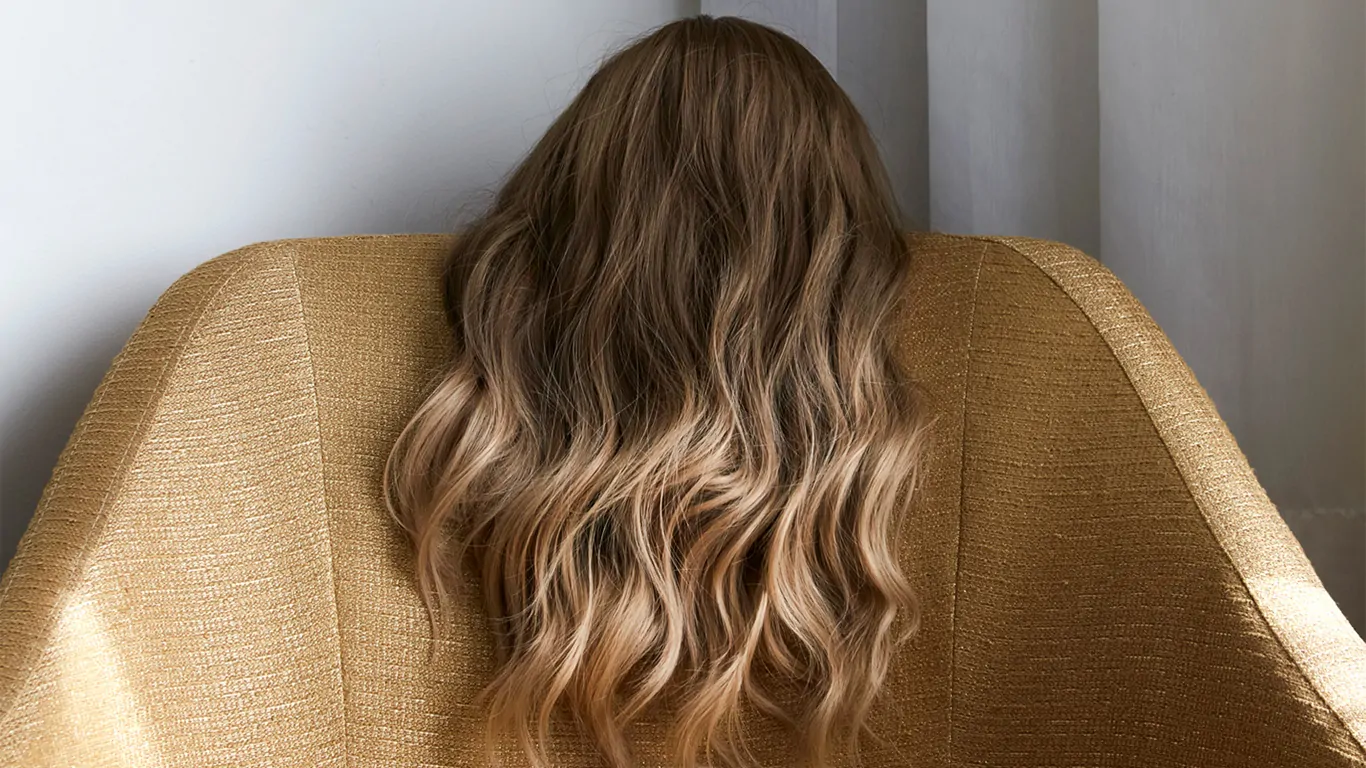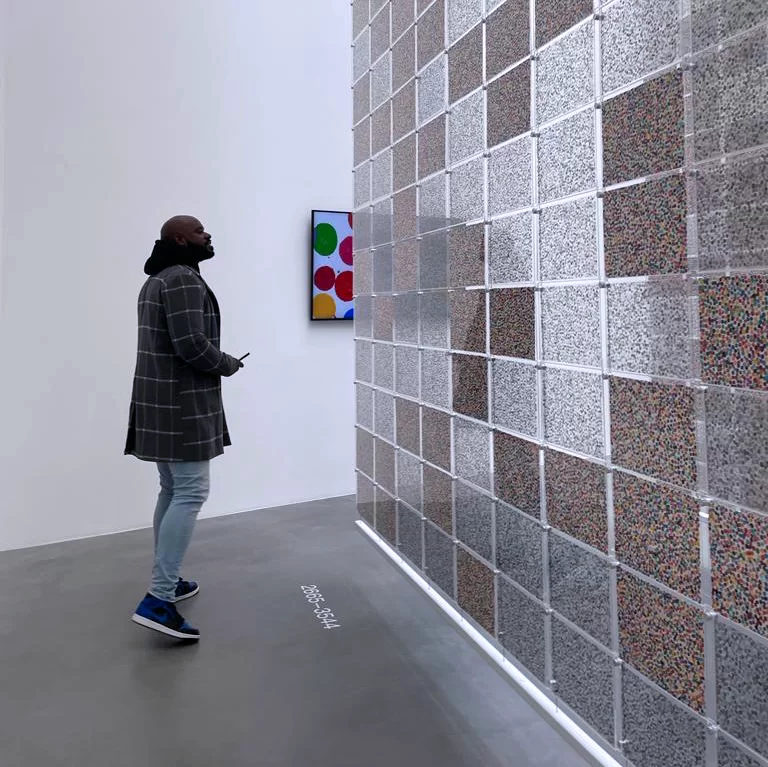In her quietly arresting photographs, American visual artist Chrissy Lush explores the ephemeral traces we leave—on spaces, on one another, on time itself. Her images, steeped in a kind of hushed intimacy, investigate the fluidity of identity and the silent dialogues between bodies and environments.
Lush’s work unravels the emotional textures of both shared and personal spaces, reimagining the mundane with a magnetic stillness. Her photographs function as paradoxical self-portraits, where figures—both anonymous and deeply personal—become vessels for memory and transformation. Identity, in her world, is neither fixed nor singular; rather, it is shaped by experience, marked by interaction, and rendered as an evolving performance.
This tension—between presence and absence, the tangible and the transient—is at the heart of her practice. Nowhere is this more palpable than in Untitled (record player), a composition that distils balance and intimacy into a single cinematic frame.
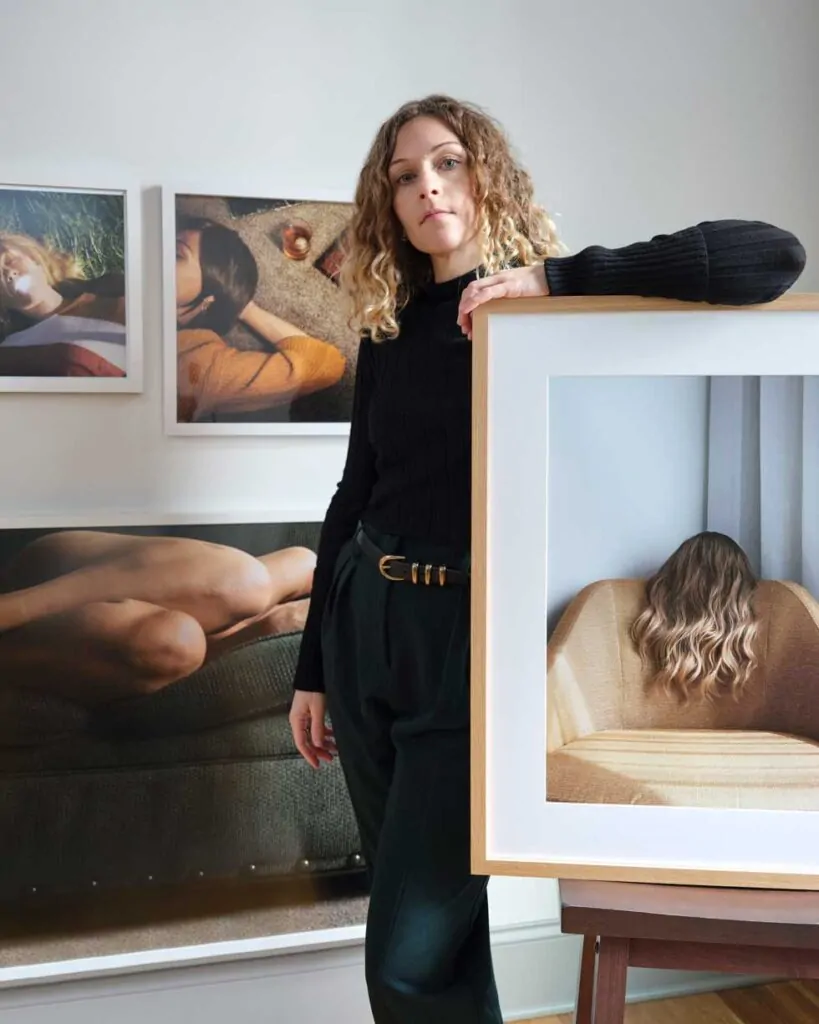
Art has always felt like a natural part of who I am. Growing up, I spent hours drawing and painting.
Chrissy Lush
A reclining figure lingers beside a turntable spinning vinyl, the warmth of an ochre sweater echoing the golden tones of a drink—perhaps whiskey on the rocks—perched within arm’s reach. The air is thick with stillness, a moment stretched between past and present, sound and silence. The pose, contemplative and unguarded, evokes the quiet solace of music’s ritual, a private reverie imbued with nostalgia.
Lush’s photographs ask us to pause, to trace the faint imprints of interaction—on space, on self, on memory. Through her lens, the ordinary becomes a meditation on impermanence, urging us to consider the marks we leave behind.
Her artistic journey is as much a study in transformation as the work itself. Originally from New York and now based in Nashville, Tennessee, Lush holds a BFA in Photography from SUNY Purchase and an MFA from Parsons School of Design. Her evolution as an artist is reflected in her 2023 self-published book, Hold Me Tight, a deeply personal exploration of ageing, time, and the quiet reckoning with impermanence.
In a time increasingly defined by the passage of time, Lush’s work speaks to the quiet anxieties of memory, identity, and what lingers after we are gone. We spoke with Lush about her practice, her inspirations, and the evolving nature of her visual language.
Hi Chrissy, thanks for speaking with us. Could we start with your journey into the arts and photography? Were there any influences or pivotal moments that cemented your decision to pursue this path?
Chrissy Lush: Art has always felt like a natural part of who I am. Growing up, I spent hours drawing and painting, and in high school, I attended a vocational art school that helped me see art as a potential career. My introduction to photography came during my first year of undergrad. I struggled with it at first, most of my photos were blurry, and I couldn’t quite figure out exposure. But something about the immediacy of the medium and the challenge of it kept me coming back. Once I started to get the hang of it, I knew I’d found my medium.
Discovering the work of Jeff Wall was a turning point for me because it was the first time I could see the magic in photography. His images pull you in, leading your eye through the frame while unraveling a story as you look. Another pivotal moment came during a visit to The Photographers’ Gallery in London in the early 2000s, where Alec Soth’s work was on view. One image stood out, a blue door, unattached to anything, just propped up in the middle of a space. It completely transformed the subject, giving it a sense of wonder and possibility. That photograph changed the way I thought about what photography could do. I still carry a postcard of it from that show with me as a reminder of why I fell in love with the medium.
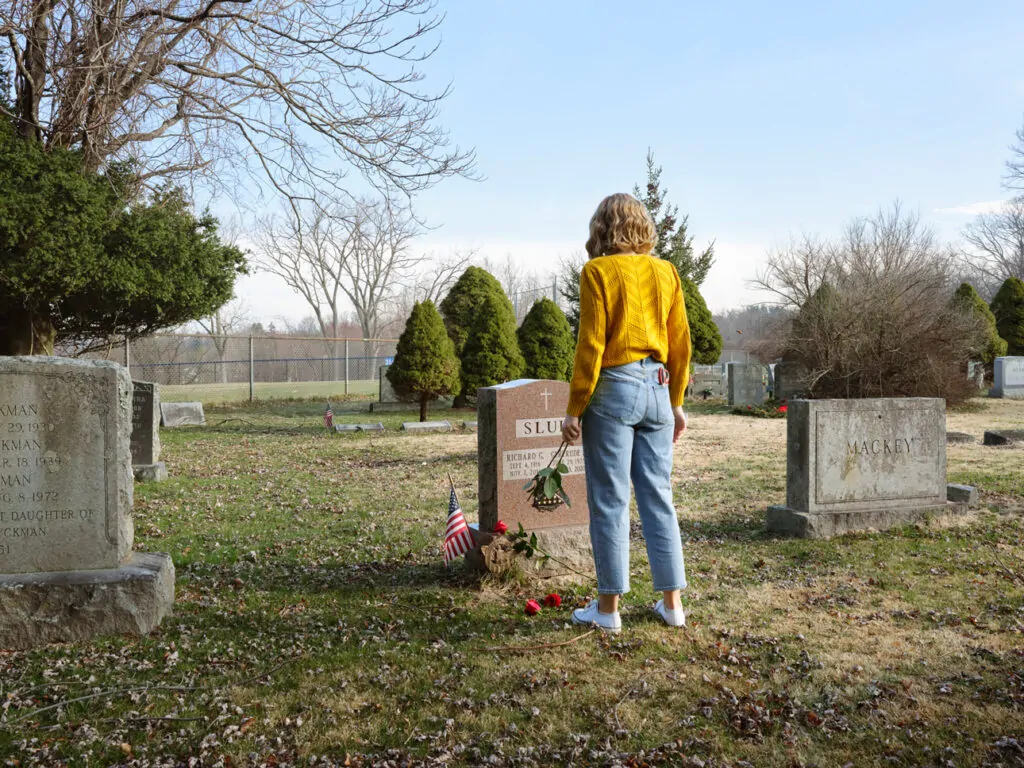
Chrissy Lush
Image courtesy of the artist
© Chrissy Lush
Your photography often blurs the line between reality and artifice, presenting scenes that evoke mystery and introspection. How do you decide on the balance between the real and the fabricated in your compositions, and what role does ambiguity play in the narratives you create?
Chrissy Lush: All of my images are fabricated, but the emotions and stories behind them are real. Much of my work is inspired by personal experiences—navigating internal struggles, reflecting on the past, or grappling with new stages of life. In that sense, the work feels diaristic. I use real locations as the foundation of my images, incorporating props, styling, and lighting as needed to shape the scene. Once I place myself within the environment, I usually work to replicate a clear vision, but in instances where the idea is less defined, I allow for spontaneity, responding to the space and its elements as they unfold. This approach brings an organic quality to the work, ensuring the final image feels alive rather than overly controlled.
I like ambiguity in my compositions because it opens up a conversation between the viewer and the image. I want my images to feel like fragments of someone’s lived experience, as though the viewer is witnessing a private moment. For example, in one of my images, someone sits behind a gold chair, with their hair cascading over the back. The figure is mostly obscured, creating a sense of mystery and inviting the viewer to imagine what might be happening just out of view. By hinting at a narrative without fully explaining it, I leave room for viewers to bring their own interpretations and experiences to the work. This interplay between what is shown and what is left unsaid fascinates me.
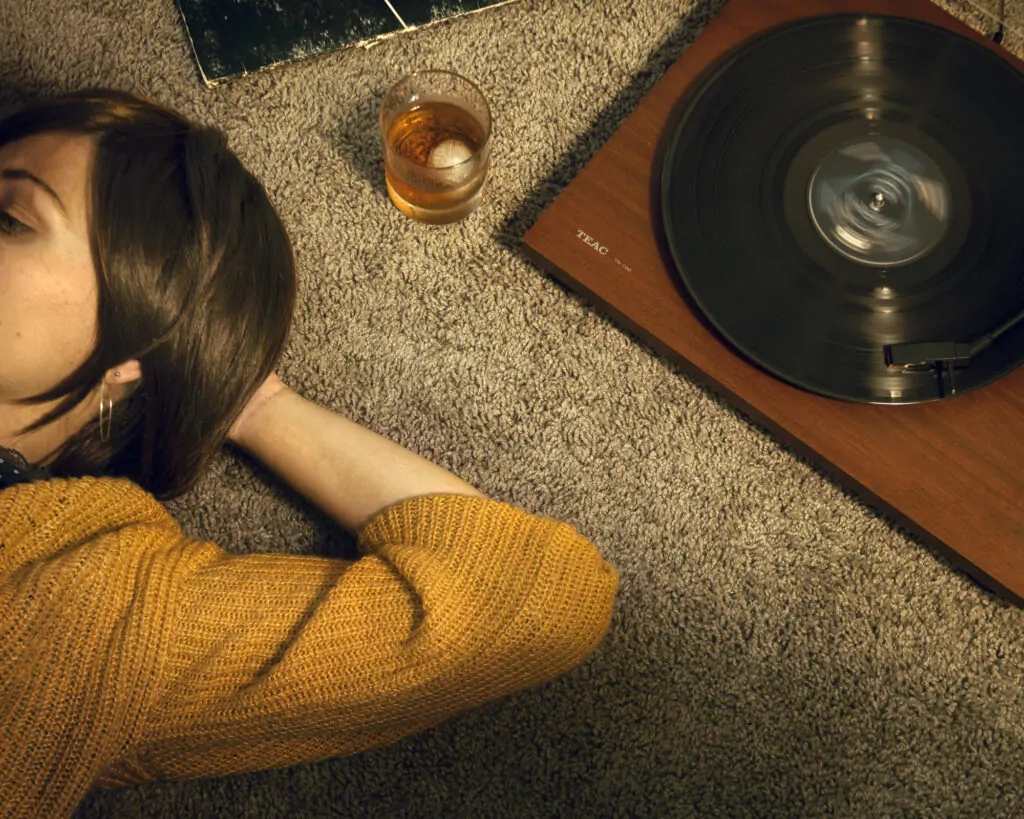
Chrissy Lush
Image courtesy of the artist
© Chrissy Lush
Coming from a background in painting and drawing, how do those disciplines inform your approach to composition and the staging of your photographs? Are there particular techniques or visual philosophies from those art forms that continue to inspire your process?
Chrissy Lush: I think my drawing and painting background is what initially drew me to staging my photographs. In painting, every element on the canvas is deliberately placed to create a composition that tells a story. That same approach guides my photography, where I construct each image with intention, arranging details to build a narrative and subtly guide the viewe
When thinking about composition, I often consider the role of negative space. Open areas create breathing room and help direct focus to what’s most important in the frame.
The absence of detail can also add a sense of tension, inviting the viewer to pause and reflect.
Color theory also plays a key role in my work. The way tones interact in the frame helps shape the mood of the image—whether it’s bold contrasts that add energy or softer palettes that bring a sense of quiet. I choose colors thoughtfully to support the overall feeling I want to convey in each piece.
Self-portraiture is central to your work, transforming you into both the creator and the subject. How does this dual role help you delve into the psychological and philosophical themes of vulnerability and introspection that your images explore? How has this practice evolved over time?
Chrissy Lush: Self-portraiture began as a practical choice for me, it allowed me full control over every aspect of the image while working alone, which is the only way I know how to explore the ideas behind my work. If I worked with models, I’d feel pressured to get it right the first time, which would stifle that sense of exploration. Instead, self-portraiture gives me the space to experiment, refine, and create images that feel authentic to my vision.
As I mentioned earlier, my work often serves as a way to process internal struggles. For example, my series Hold Me Tight emerged as I grappled with my feelings about aging, reengaging with a younger idea of myself to process those emotions. Using myself as the subject allowed me to approach this concept with a level of vulnerability and authenticity that I don’t think I could have achieved with a model.
When I first started exploring self-portraiture, I didn’t always disguise myself. That shift began with Hold Me Tight, where altering my appearance became a way to create distance. Disguising myself allows me to create a figure that feels anonymous, inviting viewers to connect with the work on a more universal level rather than focusing on recognizing me. These elements of my process, working through deeply personal themes while obscuring my identity, might seem contradictory, but together they allow me to balance vulnerability with distance.
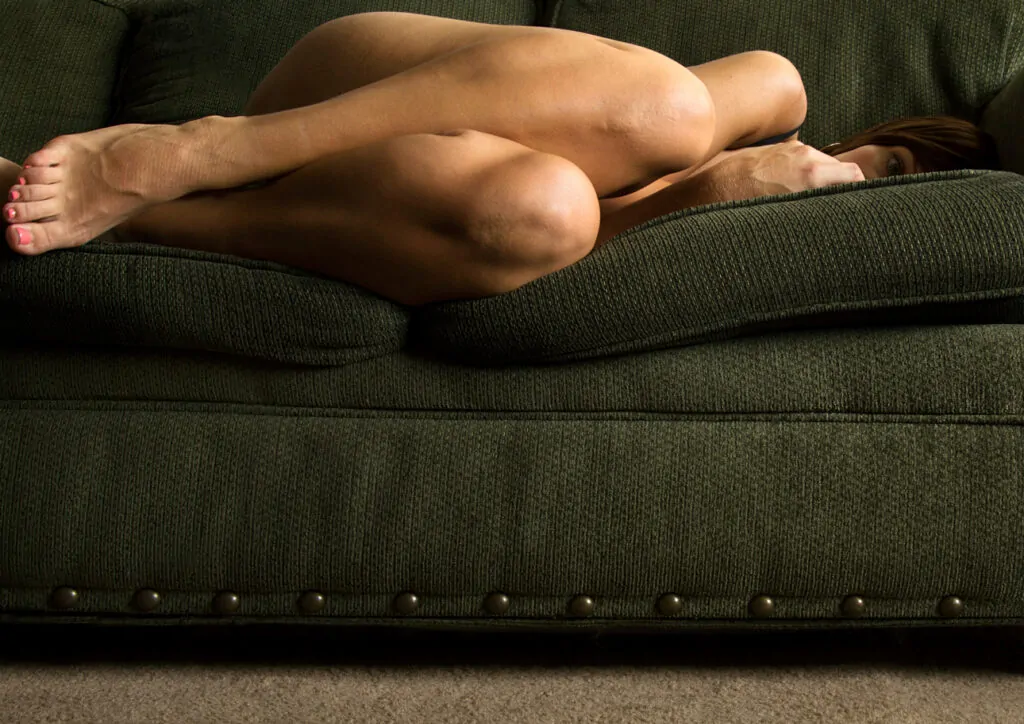
Chrissy Lush
Image courtesy of the artist
© Chrissy Lush
Your work delves into the darker and introspective sides of human nature, often leaving certain aspects unresolved. How do you approach creating this ambiguity, and what do you hope viewers take away from these moments of tension and mystery?
Chrissy Lush: I don’t actively set out to create ambiguity, it’s more of a gut feeling that emerges during the process. In a way, ambiguity is inherent to photography. The medium itself captures only a small slice of time, a fragment of a story, and I find that the less information provided in the frame, the more natural and compelling the image feels. Too much detail can make an image feel forced, whereas leaving room for interpretation allows the story to unfold in the viewer’s imagination.
The unresolved aspects in my images often stem from this idea of suggesting a narrative without fully defining it. These moments lack a clear beginning or end, and that incompleteness is something I find fascinating. It keeps the image alive by raising more questions than answers, which I think is far more engaging. As a viewer, I’ve always been drawn to images that spark my imagination, and I hope my work inspires a similar response. These open-ended narratives also reflect the complexity of human experience, where not everything has a clear resolution or explanation. This quality mirrors the uncertainty we often navigate in our own lives.
When it comes to what I want viewers to feel, I don’t aim to prescribe any specific emotion. Each person brings their own experiences and perspectives to an image, which shapes their interpretation. That said, I’m naturally drawn to tension and an underlying sense of unease, which is why those elements often find their way into my work. I think they create a space where viewers can pause, reflect, and engage with the mystery of the image.
What lens and camera do you primarily use to achieve the sense of intimacy and tension in your images? Are there specific technical choices—such as depth of field, lighting, or framing—that you consider essential in crafting the emotional and psychological depth your work conveys?
Chrissy Lush: I use a Fuji GFX 50s II with either a 45mm or 23mm lens, depending on the goal
of the image. I like a lot of clear detail in my work, so I use the farthest depth of field possible for the lighting situation. That clarity creates a sense of realism, making every detail in the image accessible and valuable to how the viewer reads it. I think it helps immerse them in the scene and emphasizes the importance of every element within the frame.
I mostly rely on natural light, but I’ll often use a strobe in a key position to add drama and direct the viewer’s attention. Shadows and darker lighting naturally create a moody emotional tone, as do colors like deep blues and greens. I use these techniques when they fit the mood I want to convey. But I also like to play with visual contradictions, like pairing unsettling subject matter with bright lighting and cheerful colors. That kind of juxtaposition creates a sense of uncanniness that I find intriguing—it adds tension and complexity to the image, inviting the viewer to look closer.
Framing is another essential part of creating intimacy or tension. When I want to create closeness, I’ll use the 45mm lens to compose a tight crop around the subject. For images where I want to suggest isolation or tell a larger story, I’ll pull back with the 23mm lens to show more of the surroundings and the subject’s relationship to their environment.
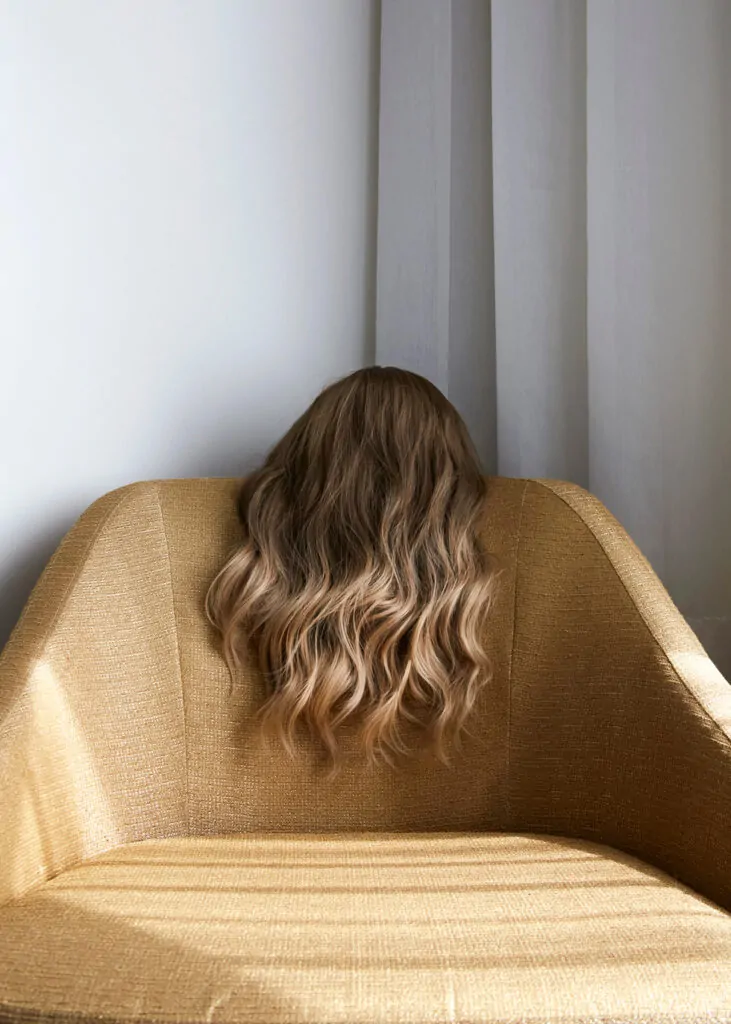
Chrissy Lush
Image courtesy of the artist © Chrissy Lush
With accolades like the Passepartout Photo Prize and collectors such as Timothée Chalamet, how has the recognition of your work shaped your creative direction? Does this external validation influence the themes you explore or the risks you’re willing to take?
Chrissy Lush: It’s always gratifying to receive recognition for your work, but I have to admit
it also introduced a bit of fear. For a brief time, I felt paralyzed, unable to create new work. There was this underlying worry: what if my next series didn’t measure up, and I lost the momentum I had built? It took some time to move past that, but eventually, I realized I can’t let the potential reception of my work dictate what I create. I made a conscious decision to focus on making the work for myself, because the process is what I truly enjoy. If others connect with it, that’s a wonderful bonus, but it can’t be the driving force behind what I do.
The recognition hasn’t necessarily changed the themes I explore, as those are driven by my personal interests and experiences, nor has it altered my approach to taking risks. I’ve always believed that growth comes from experimentation and trust in the process, rather than trying to meet external expectations. What it has done, however, is reinforce the importance of staying true to my creative instincts. This mindset has helped me push forward with a renewed sense of
purpose and confidence in my work.
Looking ahead, you’ve mentioned continuing to push the boundaries of staged realism. Are there specific techniques, themes, or collaborations you are exploring to further challenge the conventions of constructed photography and self-portraiture?
Chrissy Lush: I’m always open to experimenting, but lately, I find myself less concerned with
grand ambitions like challenging conventions and more focused on deepening my practice. My approach has recently shifted from structured project-based work to a more intuitive process, something I’ve been considering for a while. In the past, I would start with a concept and then work out how to visually represent it.
Now, I’m allowing the images to reveal themselves to me, working from sudden, clear visions that feel more like a conversation with my subconscious. It’s a refreshing and empowering change, and it’s leading me in new directions that feel both exciting and challenging. As a result of this change, I’ve noticed a shift in the themes and style of my work.
The images have become darker, slightly more cinematic, and emotionally charged. I don’t fully know why it’s happening, but that’s part of the beauty of following inspiration as it comes. I think it ties back to my interest in how the conscious and subconscious interact. Often, our actions and behaviors come before understanding—we act first and reflect later, and it’s in that reflection that we uncover our motivations. This process feels similar. For now I’m enjoying the freedom and spontaneity of this approach.
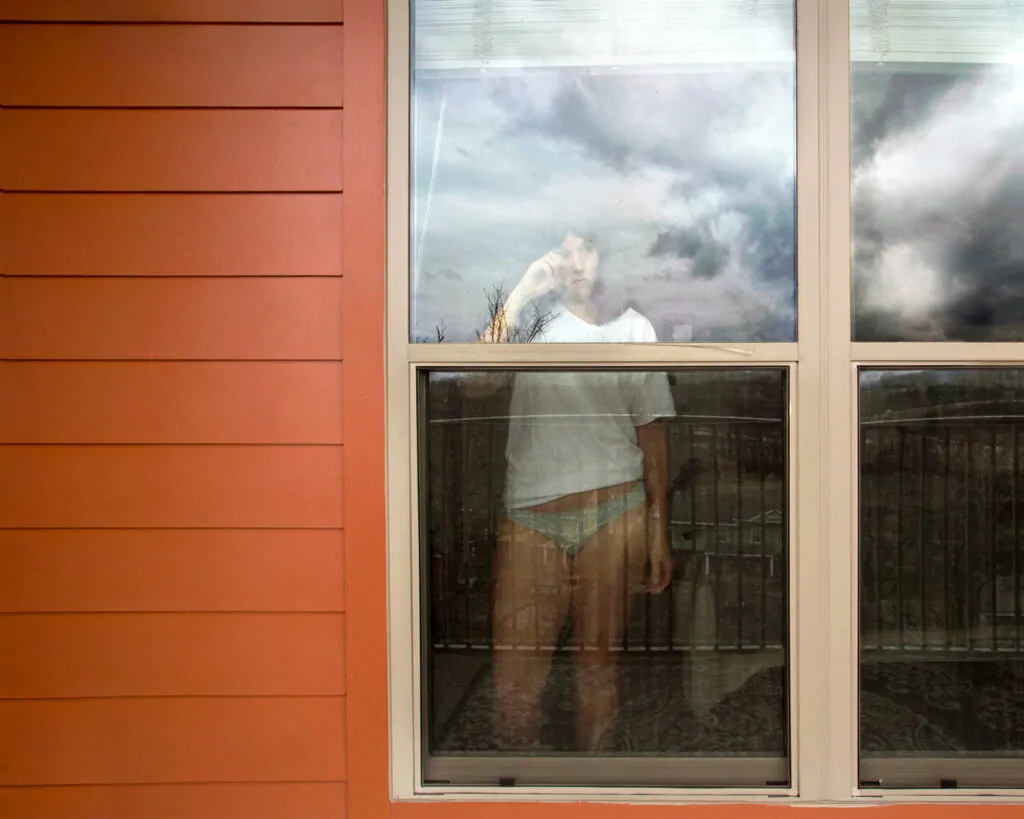
Chrissy Lush
Lastly, could you share with us your philosophy of art and how it influences your career and life?
Chrissy Lush: For me, creating art is both an act of self-expression and a way to connect with
others. The process brings me joy, it’s where I feel most in tune with myself and my ideas. But that joy isn’t complete until I share the work and see how it resonates with others, creating a space for connection. Art feels like an escape, both in the act of creating and in what it offers to the viewer. When I’m making work, I lose myself in the process—it’s a space where I can explore and let ideas emerge.
I hope my work provides a similar sense of stepping into another world for the viewer, offering them a moment to pause, reflect, or imagine something new. This is why I focus so much on exhibiting at art fairs. They allow me to interact directly with my audience and see firsthand how my work resonates. Meeting collectors and hearing what draws them to my art is incredibly rewarding. It’s a constant reminder of the connections art can foster and the joy it brings to
people’s lives.
©2025 Chrissy Lush


